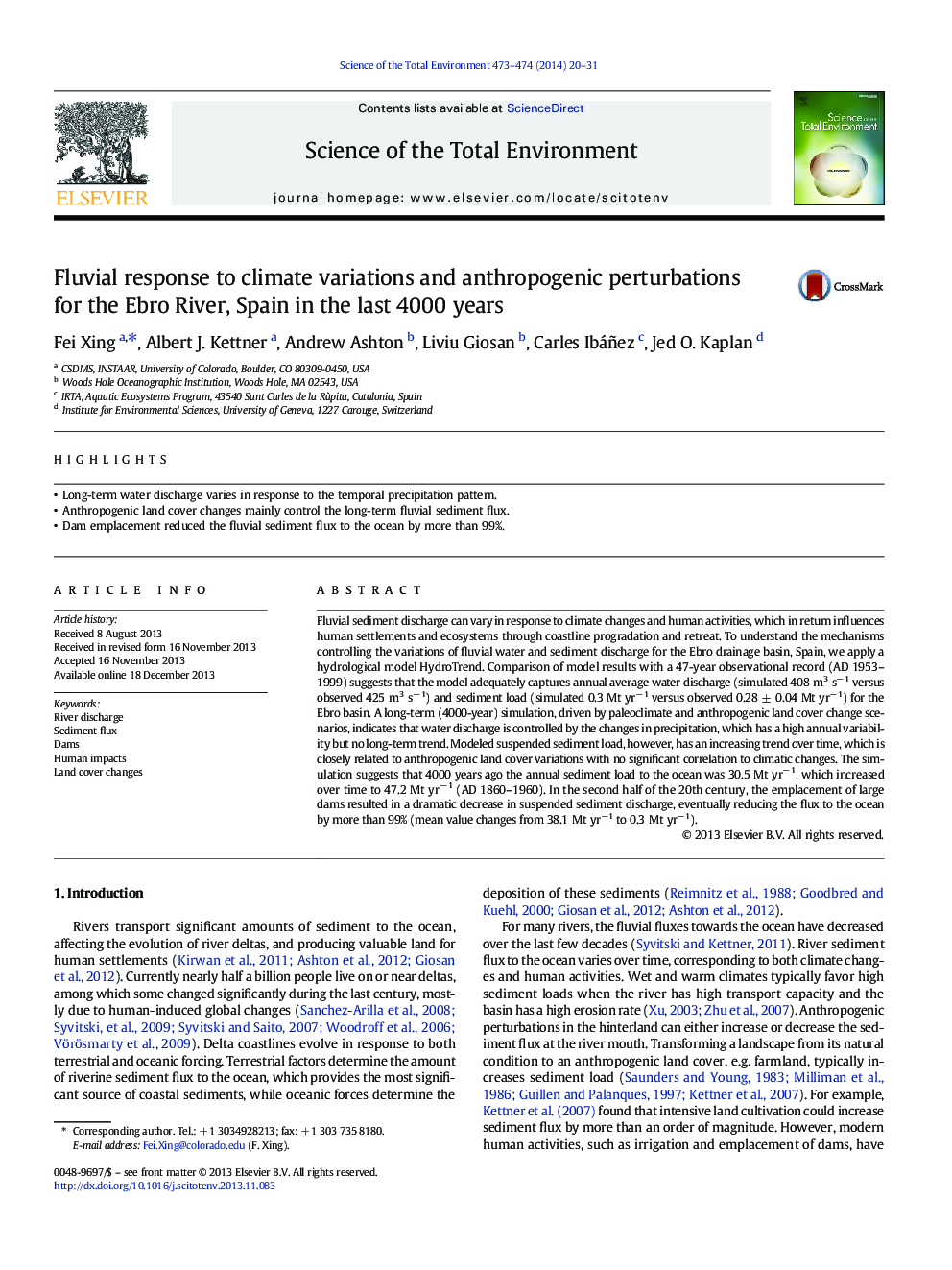| Article ID | Journal | Published Year | Pages | File Type |
|---|---|---|---|---|
| 6331588 | Science of The Total Environment | 2014 | 12 Pages |
Abstract
Fluvial sediment discharge can vary in response to climate changes and human activities, which in return influences human settlements and ecosystems through coastline progradation and retreat. To understand the mechanisms controlling the variations of fluvial water and sediment discharge for the Ebro drainage basin, Spain, we apply a hydrological model HydroTrend. Comparison of model results with a 47-year observational record (AD 1953-1999) suggests that the model adequately captures annual average water discharge (simulated 408 m3 sâ 1 versus observed 425 m3 sâ 1) and sediment load (simulated 0.3 Mt yrâ 1 versus observed 0.28 ± 0.04 Mt yrâ 1) for the Ebro basin. A long-term (4000-year) simulation, driven by paleoclimate and anthropogenic land cover change scenarios, indicates that water discharge is controlled by the changes in precipitation, which has a high annual variability but no long-term trend. Modeled suspended sediment load, however, has an increasing trend over time, which is closely related to anthropogenic land cover variations with no significant correlation to climatic changes. The simulation suggests that 4000 years ago the annual sediment load to the ocean was 30.5 Mt yrâ 1, which increased over time to 47.2 Mt yrâ 1 (AD 1860-1960). In the second half of the 20th century, the emplacement of large dams resulted in a dramatic decrease in suspended sediment discharge, eventually reducing the flux to the ocean by more than 99% (mean value changes from 38.1 Mt yrâ 1 to 0.3 Mt yrâ 1).
Related Topics
Life Sciences
Environmental Science
Environmental Chemistry
Authors
Fei Xing, Albert J. Kettner, Andrew Ashton, Liviu Giosan, Carles Ibáñez, Jed O. Kaplan,
